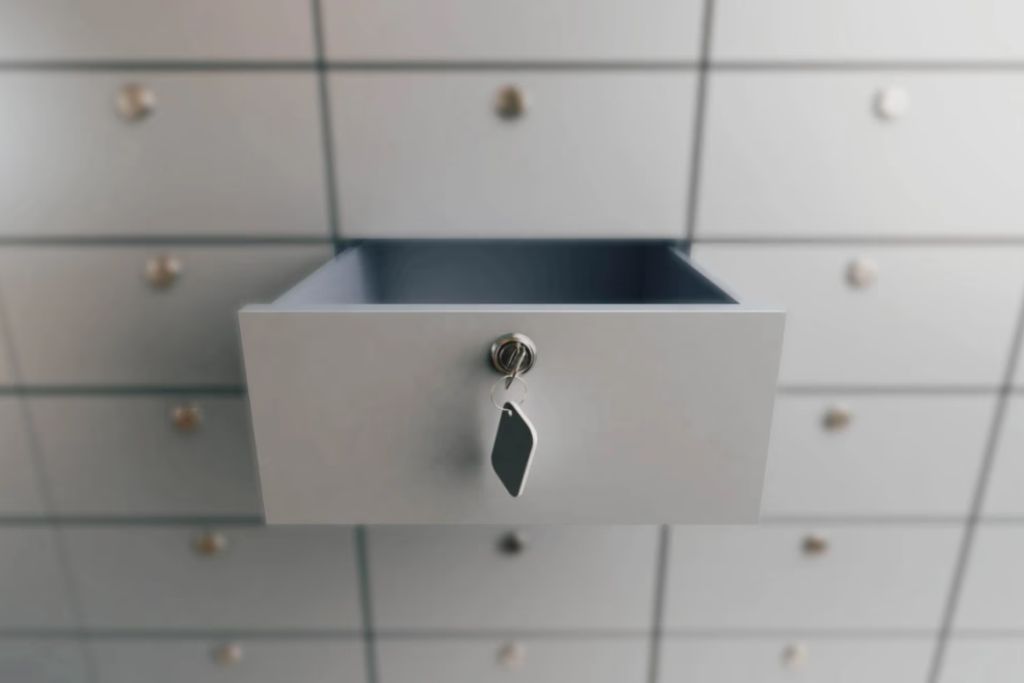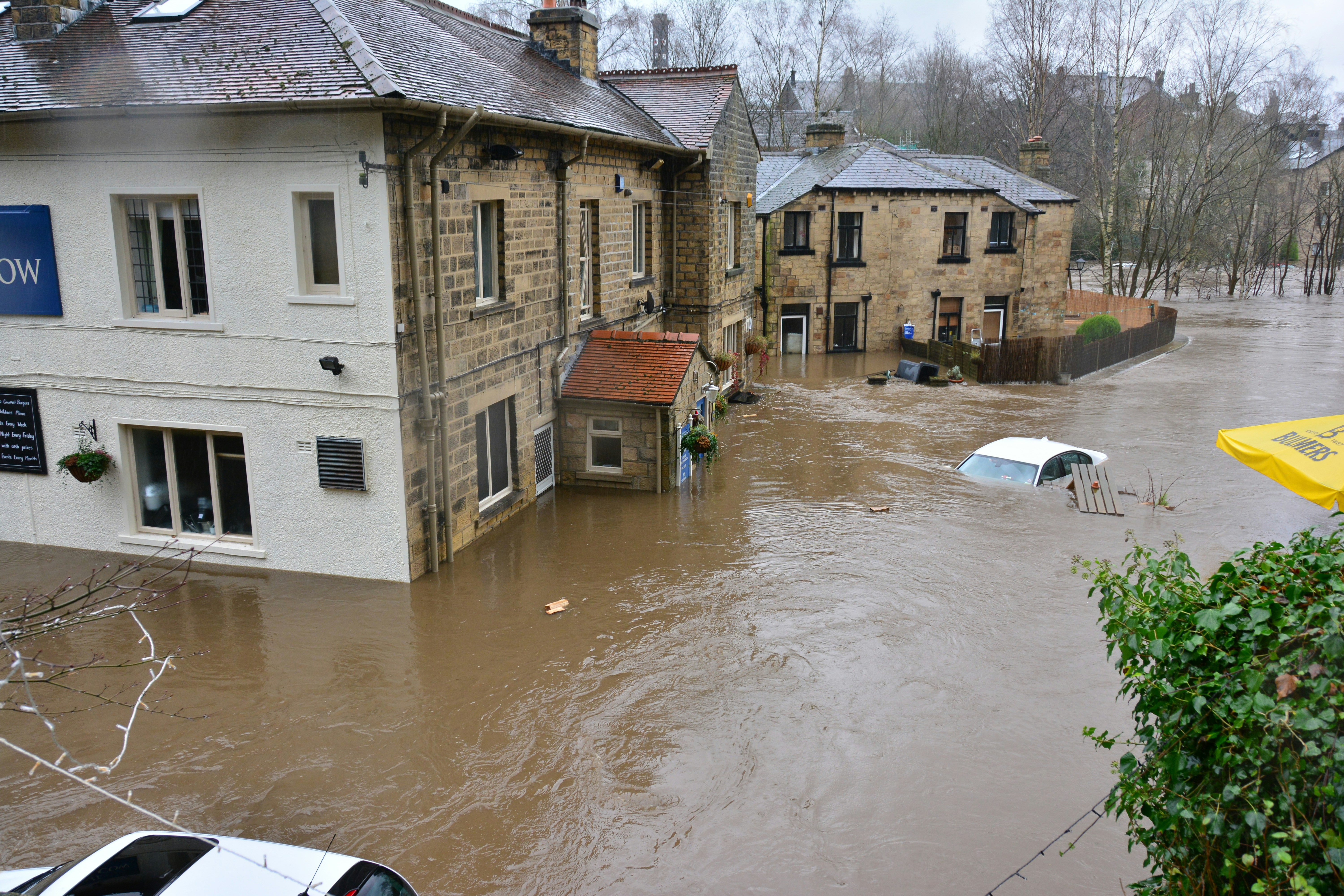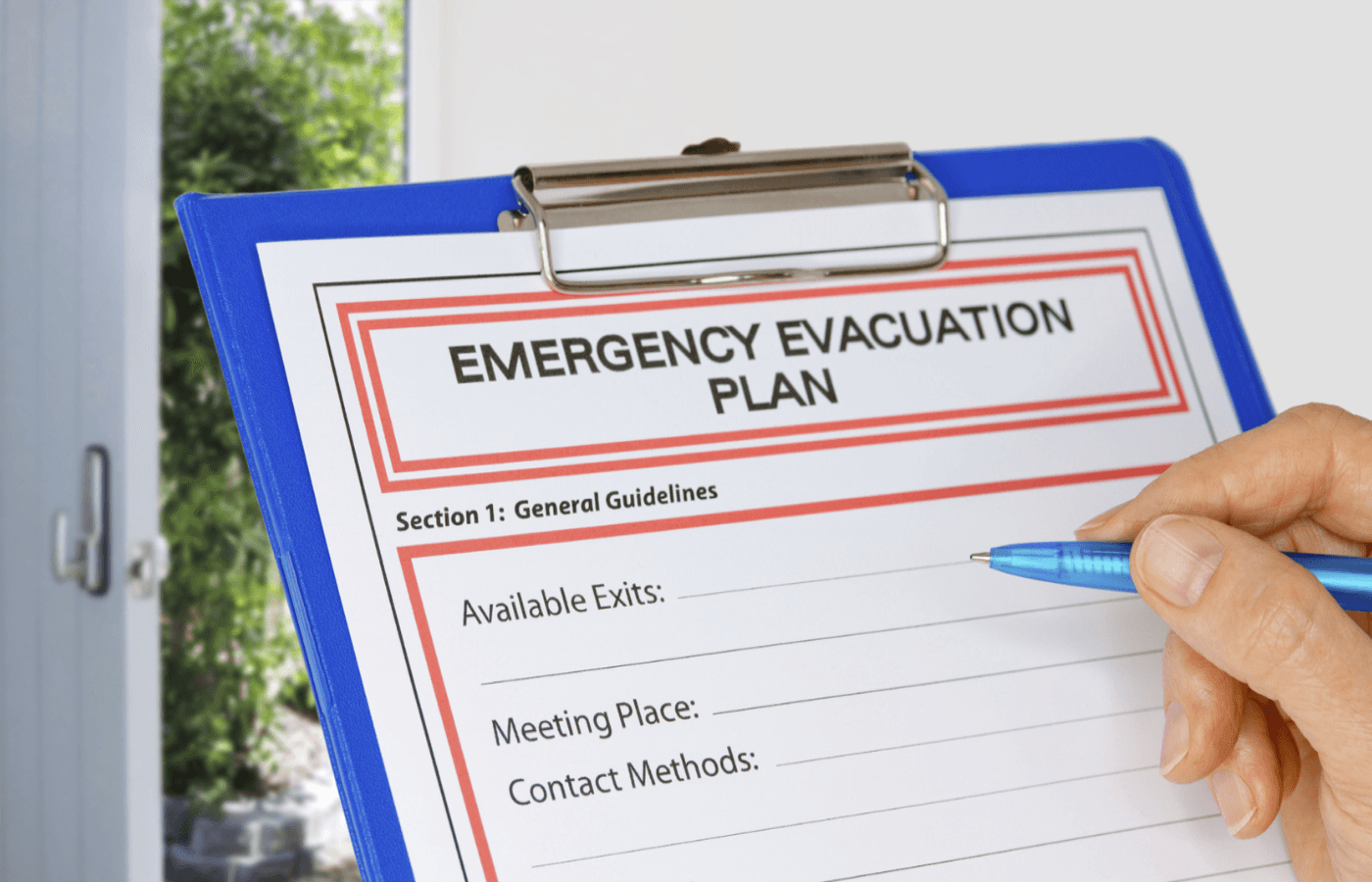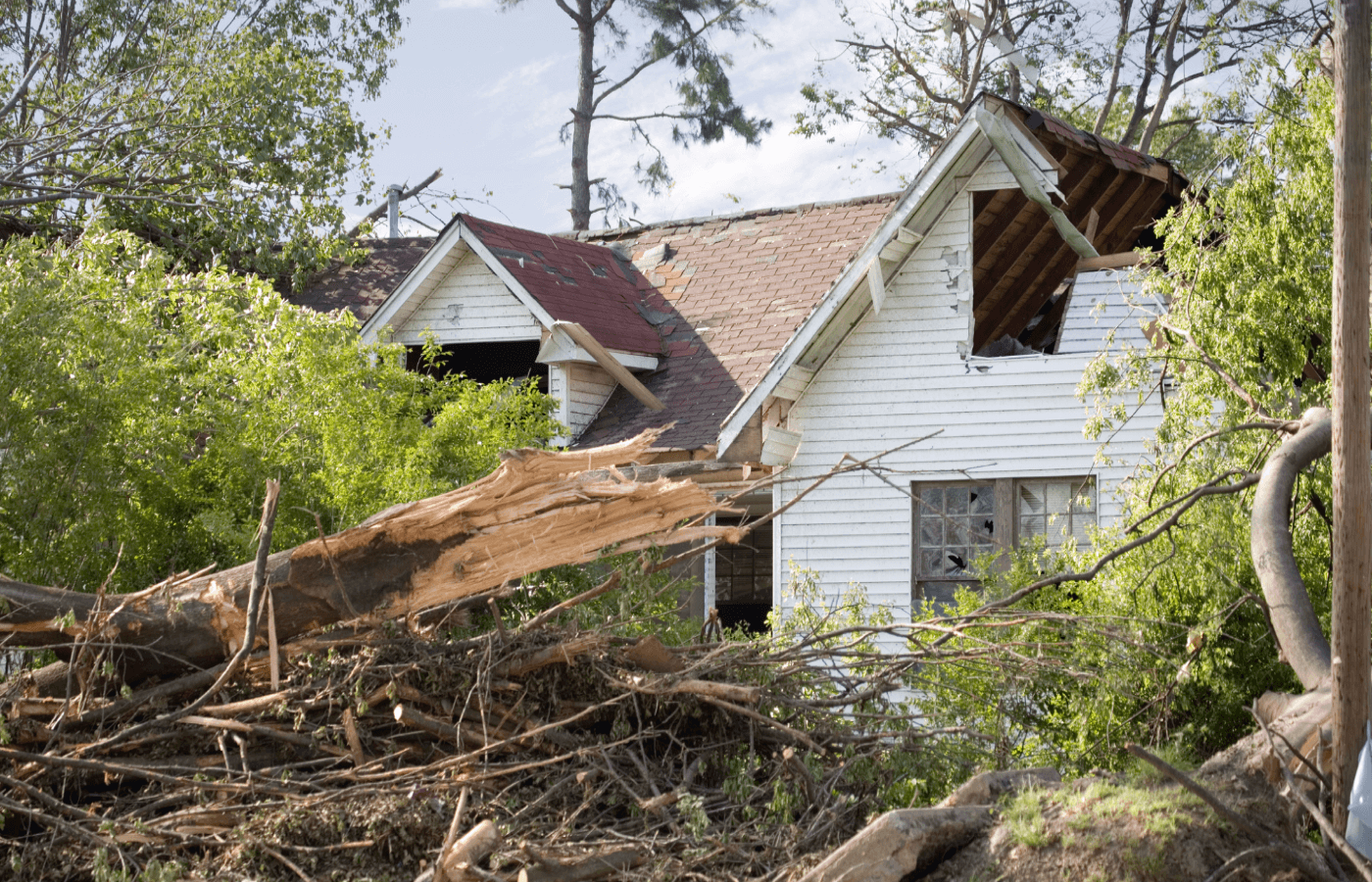Picture this: you’re searching for a very important document only to discover it’s now sopping wet, and all the crucial information is indistinguishable. Now, you have the headache of replacing the document.
To avoid this scenario, it’s crucial to protect your documents from water damage, whether from a natural disaster or a plumbing accident. This guide will cover some practical storage methods to help keep your important documents safe.
Key Takeaways
Some of the easiest and most affordable ways to protect your documents from water damage are using waterproof containers and resealable plastic bags.
Create copies and store them in multiple off-site locations, like in a safety deposit box at the bank.
Create, store, and share your digital copies in a secure digital vault like Trustworthy.
How to Protect Documents From Water Damage
While some methods can be used to salvage wet documents, they aren’t always successful. If the documents are original, replacing them can be a costly and add to the stress of dealing with the aftermath of a natural disaster.
Here are some ways you can protect your documents from water damage.
Store Documents in Waterproof Containers
Before you store your documents, it is a good idea to go through them first and determine which are the most valuable. These documents should be kept somewhere with added protection and higher priority. They include:
Tax records
Identity documents
Insurance policies
Documents that contain your Social Security number
Diploma or military certificates
Passports
Business files
Medical documents
Estate planning documents like trusts, deeds, and wills
Financial documents or things like account numbers
Copies of licenses (Driver's or marriage)
Inventories of household items for insurance purposes
Once you identify what documents you need to project, you can store them in a waterproof container. This is a great fail-safe method for protecting on-site documents, but there are some considerations you must be aware of.
The first is the type of container you use. Ensure it’s waterproof and not simply water resistant. “Water resistant” is not actually waterproof and can provide protection for only a short period. You can typically find this information on the labels on the containers.
Second, the location where you store your container is crucial. Store it somewhere accessible so you can carry it out easily. Avoid storing your container in hard-to-reach places or in basements in case of flooding.
Finally, you should test your container before a disaster strikes to check for leaks.
Use Waterproof Safes
Waterproof containers are a great storage option, but they’re not the most reliable when compared to other options like waterproof and fireproof safes. These types of safes are built to withstand the dangers of natural disasters like hurricanes, flooding, and earthquakes.
To keep your documents safe from water damage, invest in a waterproof safe, especially if you stay in an area that experiences high storm surges. These safes can withstand flood waters for extended periods of time. To ensure your safe is capable, look for one that comes with a high ETL rating, which means the safe is compliant with all the applicable standards.
You can also invest in a dual safe that’s both waterproof and fireproof to ensure your documents are protected from all kinds of danger. These safes can withstand temperatures ranging from 1150° F to 1850° F and are designed to protect documents from water damage from firefighting measures. Check out the UL rating to ensure your safe is protected against fire damage.
Be sure to test your safe before an emergency situation to give you peace of mind your documents are protected.
Store Important Documents Digitally

Despite your best efforts, there is no guarantee that your physical documents are 100% protected, so consider storing digital backups of your documents on online storage platforms.
Digital storage means your documents are safe from physical damage and can be accessed from just about anywhere.
Use a document scanner on your smartphone to upload and convert your documents into PDF files for easy access on a storage platform of your choice. There are multiple reputable and free online storage platforms you can use, like Google Drive, Dropbox, and Microsoft’s OneDrive. These platforms are easy to navigate and are compliant with data privacy regulations.
But for the highest level of document protection, as well as ease of use, consider using Trustworthy. The Trustworthy Family Operating System® has advanced digital storage capabilities, making it simple to access and share important documents.
Your documents are protected from water damage on a user-friendly platform, and Trustworthy also has impressive security features. These include 256-bit AES encryption, biometric authentication, tokenization, and two-factor authentication, while remaining compliant with data privacy regulations.
Seal Documents in Waterproof Bags
Protecting your documents from water damage doesn’t have to require expensive equipment like safes. In fact, you can protect your documents using things you likely have at home, like resealable plastic or vacuum-sealed bags.
This is particularly useful for preparing your portable emergency kit for a hurricane. Store your crucial documents in these waterproof bags, which are compact and relatively inexpensive.
Documents that you should store in your portable emergency kit include:
Identification documents
Medical records
Financial documents
Insurance policies
If you invest in waterproof equipment like safes and containers, you can still place your documents in the bags and store them inside the safe for additional protection. If you’re in a humid area, you can pop a couple of silica gel packets into the bag to prevent moisture buildup. You won’t need to do this if you’re using a vacuum-sealed bag, as all the air is sucked out before the bag is sealed.
Elevate Document Storage Off the Ground
Regardless of what document storage method you use, whether it’s a safe container or waterproof bag, where you keep it will play a huge factor in how safe your documents will be.
To ensure the safety of your documents, it is recommended to store them on high shelves to avoid ground-level water exposure.
If you live in an area prone to flooding, avoid storing your documents in below-ground areas like basements. Just make sure that the documents can still be reached and that all family members know where to find them.
Avoid the hassle of keeping your documents on high shelves and still risking physical damage by digitally backing up your documents to Trustworthy. Not only is it physically safer, but the document filing recommendations and auto filing make it simple to keep your documents organized.
Use Climate-Controlled Storage Units
An additional thing you must consider when storing your documents is the environment in which they’re stored. Delicate items like paperwork are at risk of damage from temperature and humidity, which is ironic, considering that you’re storing them to protect from water damage.
Climate-controlled storage units regulate moisture levels in the air by using air conditioners and dehumidifiers to guarantee ideal temperatures of 55°F and 85°F.
While climate-controlled storage units are an effective storage method, they’re not the most affordable. A clever, budget-friendly hack to control the climate of your storage container is to place a couple of charcoal bricks inside to absorb the moisture in the air.
Store Copies in Offsite Locations

Another method to protect your documents from water damage is storing copies in offsite locations, and luckily, there are plenty of storage options to choose from.
Create copies of your documents and store them in a safety deposit box at your local bank or financial union. Depending on the size and location, renting one of these boxes can cost as little as $15 per year to $300.
You can store documents like investment records, financial records, estate planning paperwork, property deeds, and insurance policy descriptions. One option is to store your documents at multiple offsite locations to lower the risk of water damage, including sharing copies on external hard drives with trusted family members or legal representatives.
Frequently Asked Questions
How do I save documents that have water damage?
Emily Vincent, a librarian preservation expert from the University of Houston, advises: “First off, prioritize what you’re going to save. … Use the fan, dehumidifier, the sun, and any resources you have. … If it’s more severe, consult with experts or look for resources at the American Institute for Conservation.”
What should I do if my documents get wet despite precautions?
If you are unable to dry your documents during the aftermath of a disaster, a good idea is to try freezing them or letting them air dry for 200 documents or less.
We’d love to hear from you! Feel free to email us with any questions, comments, or suggestions for future article topics.
Trustworthy is an online service providing legal forms and information. We are not a law firm and do not provide legal advice.














